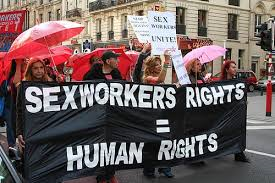
Inefficient, unaffordable and scarce: Demographic change will worsen the UK housing crisis
In the next 20 years alone, the UK population between 65-84 years will increase by almost 40% and the number of over 85 year olds by more than 100%.[1] It is predicted that the effects of demographic change on the health and welfare system as well as the labour market will be drastic. The rapid ageing of society also has dramatic effects on available affordable housing and only a well-planned policy response can prevent a national housing crisis.
Elderly people occupy almost a third of all homes in the UK. The vast majority of elderly people (over 73%) own the house they[2] live in.[3] The English Housing Survey 2012 has found that almost 50% of homes occupied by their owners have at least two bedrooms that are not considered ‘necessary’.[4] Elderly people often live in homes that are too big and too expensive to maintain. This not only increases their risk of slipping into poverty due to high utility bills, but is also an inefficient distribution of available housing space. Until 2032, the number of over 85 year olds living alone will grow by 244%, which will result in 40% of all households being occupied by only one person.[5] These trends will create shortage of affordable housing necessitating a well-designed and quickly implemented housing policy to tackle this looming crisis.
Alleviation of the housing shortage is complicated by is a lack of retirement and care homes in the UK. With the number of very old and frail people increasing rapidly, the demand for housing options with available carers and nurses will rise dramatically.[6] Local councils are reluctant to approve plans to build retirement homes because of the additional burden this would create on their health and social care facilities. The UK government needs to create incentives for local councils to approve the building of retirement properties [7] as well as support for communities that have a particularly high proportion of elderly citizens. Currently, only 1% of the elderly in the UK live in retirement homes, compared to 17% in the US.[8] According to the London-based think tank Demos, almost 60% of people of the age of 60 and above are interested in moving.[9] Hence, we need to offer more and better housing alternatives for elderly people. This would not only serve the interests of the elderly, but it would free up houses for large numbers of young people currently unable to find or afford a home.

Double standards on sex work in the EU: The ‘Nordic model’ criminalizes everyone.
The European Parliament (EP) recently voted in favor of a resolution that supports the so-called ‘Nordic model’ of sex work. With this decision from the 26th of February, the EP backs a report titled ‘Sexual exploitation and prostitution and its impact on gender equality’ that was proposed by Labour MEP for London Mary Honeyball. The purpose of the report was to send a “strong signal to domestic governments”. The document states that criminalizing the buying of sex while making selling of it exempt from punishment (as is currently the case in Sweden, Iceland and Norway), will decrease the demand for sex work. This is intended to reduce human trafficking for the purpose of sexual exploitation. In the EP’s report, the ‘Nordic Model’ is presented as a policy approach that aims to protect sex workers.
However, the Nordic approach does not improve the situation of sex workers. Instead, it indirectly leads to a criminalization of everyone involved in sex work – obviously including sex workers themselves. Criminalizing sex work increases the vulnerability of sex workers who chose this work because of economic necessity, strict immigration laws or personal preference. Moreover, it does not help those who are victims of human trafficking and have been forced into prostitution either, but instead decreases their visibility. Often portrayed as dominating the sex industry, the scale of the victims of human trafficking represents a minority of sex workers in the UK: less than 10% of female sex workers (2600 out of 30000) working indoors have been trafficked according to the Association of Chief Police Officers’ 2010 report.










